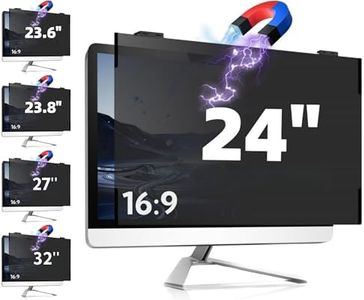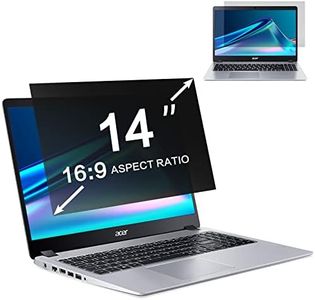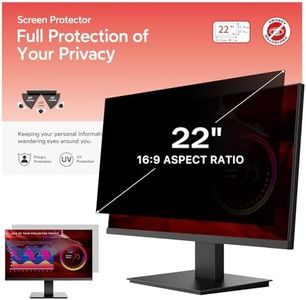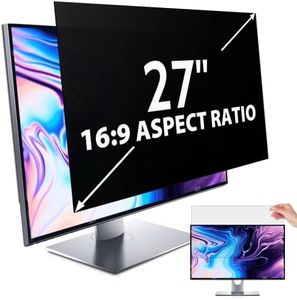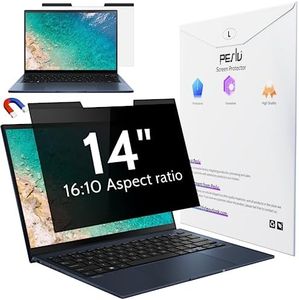We Use CookiesWe use cookies to enhance the security, performance,
functionality and for analytical and promotional activities. By continuing to browse this site you
are agreeing to our privacy policy
10 Best Monitor Privacy Screens
From leading brands and best sellers available on the web.By clicking on a link to a third party's website, log data is shared with that third party.
Buying Guide for the Best Monitor Privacy Screens
Choosing the right privacy screen for your monitor can greatly improve your personal privacy and comfort while working or browsing in public spaces or shared environments. These screens are designed to limit the viewing angle of your display so only you can see what’s on your monitor directly in front of it. To pick the best fit, it’s essential to understand the most important features and how they relate to your needs, whether you’re shielding sensitive information at work or simply want less distraction from people passing by.Screen Size CompatibilityScreen size compatibility refers to the physical dimensions that the privacy screen is designed to cover. It's crucial because a privacy screen needs to fit your specific monitor, covering all display area without obstructing function or leaving gaps. Measure your monitor diagonally (corner to corner) and know the aspect ratio (like 16:9 or 16:10). Privacy screens usually come in standard sizes, so check your monitor's specifications and pick a matching privacy screen. If you're unsure, it's better to slightly undersize rather than oversize, as larger screens may not stay in place.
Privacy AnglePrivacy angle describes the viewing range from which the screen content remains visible. This determines how far off to the side someone can be before the screen appears dark or obscured to them. Common privacy angles range from 30 to 60 degrees from the center. A narrower angle (like 30 degrees) offers more privacy but may make the screen harder to see from your own off-center positions, while a wider angle makes it easier for someone beside you to peek. Think about your workspace: if you work in crowded or sensitive environments, a narrow angle is best. For private home use, a wider angle may be sufficient for occasional privacy.
Attachment MethodThe attachment method refers to how the privacy screen connects to your monitor, impacting ease of installation and removability. Common attachments include adhesive strips, magnetic frames, or slide-on tabs. Permanent adhesives are more secure but harder to remove or adjust, while magnetic or slide-on screens are easy to remove when not needed. Choose based on how often you’ll switch between privacy and non-privacy use, and whether you want a solution you can easily transport or swap between monitors.
Image Clarity and Brightness DimmingImage clarity and brightness dimming describe how much a privacy screen affects your viewing experience. Most privacy filters reduce brightness and may subtly blur the display, making it harder to see details or work with graphics. Some higher-quality filters preserve more clarity and brightness, but these may be more expensive. If you spend long periods on your computer or rely on color accuracy, look for screens rated as 'high-clarity.' If privacy trumps perfect display quality—like for basic office work—standard filters will do.
Surface Finish (Glossy vs. Matte)Surface finish refers to whether a privacy screen is glossy or matte, affecting glare and reflection. Matte screens help reduce fingerprint smudges and reflection from lights, making them ideal for bright rooms or open offices. Glossy finishes may appear sharper but can reflect more ambient light, which could be distracting. Pick matte if you’re sensitive to reflections or work in well-lit areas; glossy may suit users who value sharper images and work in less reflective settings.
Added Features (Blue Light Filtering, Anti-Glare, Touch Compatibility)Many privacy screens offer extra features, like blue light filtering to reduce eye strain, anti-glare coatings to improve comfort, or touch screen compatibility for users with touch-enabled monitors. These benefits can make a difference depending on your usage. If you find yourself fatigued after long hours at a screen, blue light or anti-glare could help. If your monitor is touch-enabled, check explicitly for touch compatibility to avoid usability issues.

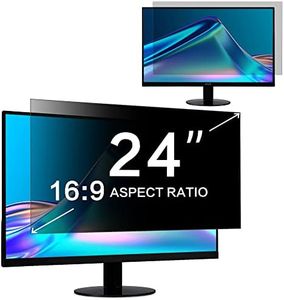
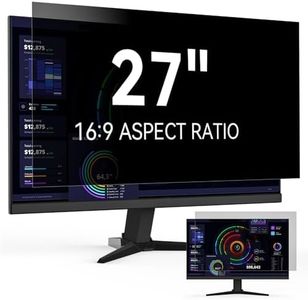
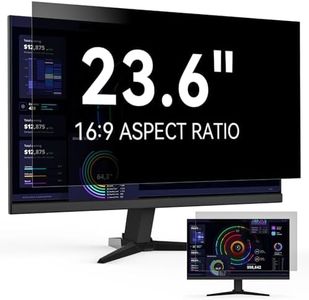
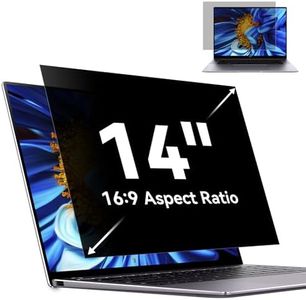
![[2-Pack] 24 Inch Computer Privacy Screen for 16:9 Aspect Ratio Widescreen Monitor, Eye Protection Anti Glare Blue Light Computer Monitor Privacy Filter, Removable Anti-Scratch Screen Protector Film](https://images-proxy.bestreviews.guide/QBJXB9tyLzZBqtz4c8swMbUeBoE=/0x300/https://m.media-amazon.com/images/I/41SBKw3J4ML._AC_CX679_.jpg)
